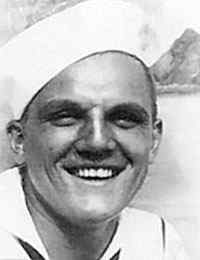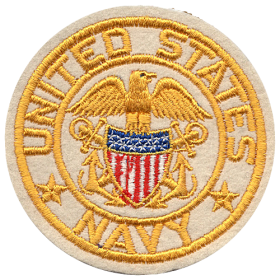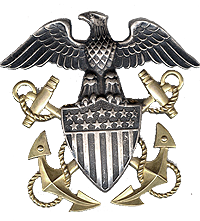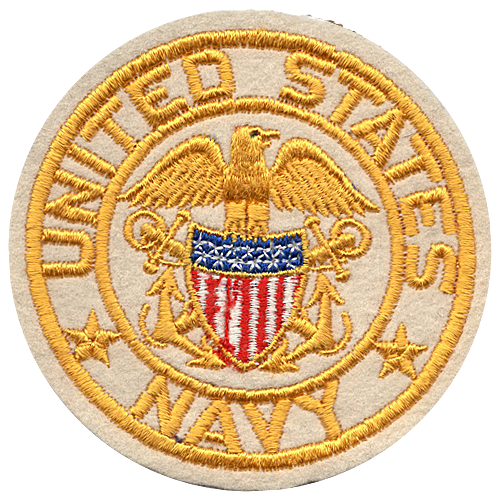Over the many years those of us that have written about Operation Neptune, the Navy‚s participation in the preparations for the great assault on Hitler‚s Atlantic wall fortifications, wrote very little about the complexity of the operation. The U. S. Navy‚s proposed amphibious strike against an enemy that seemed to spare no effort to protect his new found gains. Seeing everything around us as we loaded our LSTs with men and machines, it was apparent that something really big was about to happen. Exactly what, is what we did not know.
The planning, the size, and the complexities only a handful of top officers were in a position to know. It was truly more than anyone could grasp. We, on the landing ships knew that whatever was to happen in the next few days, we were to be the spearhead of the attack...first in. Generally speaking, we were rehearsed enough to understand the importance of what lies ahead. (Case in point was the 700 men lost in the Exercise Tiger fiasco late in April).
What we did not know was top secret. Once on our way into the English Channel on July 5th, we noticed, for instance there were no Nazi planes in the sky. But we did not know why. The answer was the incredible and highly successful air battle waged by the Allied fighter planes. The result was that the Germans had fewer than 200 planes available for the defense of France. We saw first hand quite a few shot down around us as we approached Utah Beach.
What we did not know was the great job the Allied Air Force bombers had done in knocking out Germany's gasoline-refineries and plane manufacturing capabilities. Railroads and highways needed for a counterattack were destroyed by our bombers and machine-gunned continuously by fighters. What we did not know was how the French resistance movement hindered the Germans by blowing up strategic fortifications.
What we did not know was the successful Naval battles that won complete control of the invasion sea route. There were no signs of E-boats or submarines. The German Navy had not been able to interfere with our channel crossing. The day before D-Day, one of the Allied navies‚ greatest accomplishment was the mine sweepers clearing of ten separate paths through the endless fields of floating mines that the German‚s had sown in the Channel. One of those sweepers (the OSPREY) was sunk near the LST 281. We picked up all the survivors.
What we did not know was the real danger of the mines, so at the time we could not appreciate the perilous and highly dangerous job the mine sweepers had done. The planning had involved a lot more than the stockpiling of men and equipment that we saw all around us. We were to learn later that Overlord had taken a fantastic amount of detailed study and much calculated risk. Young kids that we were, sitting on our large slow targets, too naive to grasp the meaning of it all. What we did not know was that for many many months there had been experts of all kinds working on countless items of information and techniques to be tested and hopefully to be perfected before the word "GO!".
The experts worked unceasingly on long-range weather predictions, radio communications, the new weapons, food, camouflage and maps. The maps were most important. Men in planes risked their lives flying low over the Normandy beaches in sneak raids to get information for the map makers. Ultimately there had never been better war maps. So here we sit in Dartmouth harbor on June 3rd, the troops and equipment have been loaded and it appears we are all set to move out. Security is tight, no one is allowed ashore. We sit-we wait.
What we did not know was the problems the weather was causing. It was beyond the control of any plan made at Supreme Headquarters. On this Saturday, the third, we did know the weather was bad. Waiting was bad, waiting in the miserable confines of our LSTs loaded with hundreds of soldiers made for wretched surroundings. By Sunday the 4th, it was clear that it may not be possible to move on Monday. It looked bleak and hopeless. Many of the men were unsheltered. We did not know the hard decisions one man had to make. Bad weather could devastate the assault. It became un-cooperative, increasingly menacing. So any further postponement could reek havoc. It was a tense situation. Our enemy might break the secrecy of the operation, so well guarded. The invasion force could be a big, easy target for whatever bombers and fighters Hitler had left. We, on the assault ships, the LCIs, the LSTs and the other landing craft were at combat readiness. What would another delay do to our morale?
We did not know that on June 4th, General Eisenhower met with his main advisors. The chief meteorologist said that the weather would get a little better. He said it would stop raining Tuesday morning and be somewhat cloudy, but he said it would be clear enough for our bombers to see their chosen targets. Ike asked, "Does anyone see any reason for not going Tuesday?" The answers were affirmative. He could ask for advice, but the decision was totally up to the Supreme Commander. General Dwight D. Eisenhower held the fate of all of us in his hands. He thought it over. "I don‚t think we can do anything else" he told his advisors. One word,it was "GO!". Now the big determination was made. If all goes according to plan, the vast Allied armada would reach the enemy shore before dawn on the morning of June 6, 1944 at beaches to be known down through the years as Utah, Omaha, Gold, Juno, and Sword. It was D-Day, it was H-Hour--it was history.
What we did not know, was what we did not know! We know now! Our ignorance was not bliss. Under the circumstances it was a case of our being somewhat naive that might have made us happier than the knowledgeable ones. It's easier to do something if you don‚t know how hard it is. Because of what went on behind the scene, we survived.
Where was this 20 year old Seaman-first? I was sitting at a 40 millimeter gun on LST 281 off the coast of UTAH Beach at 03:00. Maybe it was best, "We did not know!"
LST-1 Class Tank Landing Ship
Laid down, 25 June 1943, at American Bridge Co., Ambridge, PA.; Launched, 30 September 1943; Commissioned USS LST-281, 8 November 1943. During World War II, LST-281 was assigned to the European theater and participated in the invasion of Normandy, June 1944, and the invasion of southern France, August and September 1944.
She was then assigned to the Asiatic-Pacific theater and participated in the assault and occupation of Okinawa Gunto, June 1945. Following the war, LST-281 performed occupation duty in the Far East until early February 1946. Decommissioned, 9 March 1946; Transferred to the Shipping Control Authority, Japan, 20 May 1949; Transferred for service to the Military Sea Transportation Service as USNS T-LST-281, 31 March 1952; Struck from the Naval Register, 19 May 1954; Final Disposition, fate unknown. LST-281 earned three battle stars for World War II service.
Specifications
Displacement 1,780 t.(lt), 3,880 t.(fl); Length 328'; Beam 50'; Draft unloaded, bow 2' 4" stern 7' 6", loaded bow 8' 2" stern 14' 1"; Speed 12k.; Complement 8-10 Officers, 100-115 Enlisted; Troop Capacity, approx. 140 officers and enlisted; Boats, 2-6 LCVP; Armament; one single 3"/50 gun mount, five 40mm gun mounts, six 20mm gun mounts, two .50-cal machine guns, four .30-cal machine guns; Propulsion, two General Motors 12-567 diesel engines, two shafts, twin rudders.
Charles J. Adams Jr.







